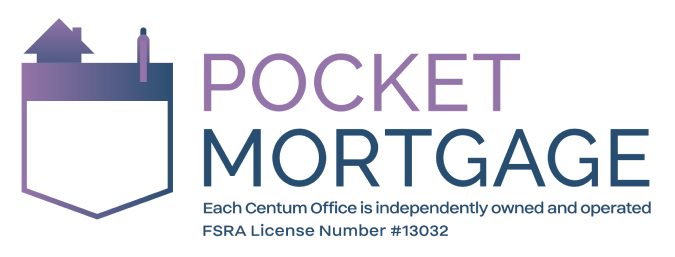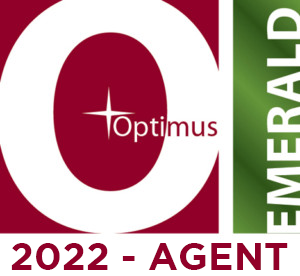Important Policy Update – MAY 2021 – New 5.25% Stress Test in effect June 1st, 2021

Two of the hottest topics at any dinner table, zoom call or virtual conference this past spring 2021 have been:
- sizzling-HOT real estate market activity, &
- ultra-LOW mortgage rates
It wasn’t clear until Q1 2021 just how much tension 2020 had built up as a result of COVID-19. Markets were afraid of further COVID lockdowns and the effect they may have on our economic recovery. However, an aggressive vaccination plan & further signs of economic recovery seem to have convinced the public that the worst may be in the past.As a result, both March and April 2021 have been absolutely record-breaking in terms of the overall market activity. Although mortgage rates started to rise, it didn’t seem to stop buyers from capitalizing on their home purchases. In fact, anyone involved in the home closing services (lawyers, appraisers, brokers, etc) will likely attest to the Spring 2021 being one of the busiest seasons we’ve had in years.
Most real estate professionals anticipated that fear of inflation ahead (as BOC continues to print more money) may trigger a new regulatory initiative from the Federal Government to slow down the real estate market. However, it wasn’t clear as to how soon these changes would be introduced.
As a result of the above, and in an effort to stop Canadian Real Estate prices from spiralling out of control, today OSFI announced their final decision to raise our qualifying rate for both insured & uninsured mortgages to 5.25% (up 56 basis points from 4.79% used prior to June 1st 2021). The new regulatory change is to come in effect starting June 1st and is expected to reduce borrowers’ borrowing capacity by ~4-5% of the purchase price. It may not sound like a lot at first, but in a hot markets like GTA/GVA the 4-5% loss in purchasing capacity may leave quite a large segment of the first time homebuyers waiting it out on the sidelines once again.
Originally, this change in the qualifying rate wasn’t supposed to affect homebuyers with < 20% (as they were supposed to continue qualifying at 4.79% after June 1st). Nonetheless, this morning’s OSFI announcement confirmed that the new qualifying rate of 5.25% is applicable to all federally regulated mortgage products.
Whether you are buying your first home or another investment property, these changes will affect all transactions dated after June 1st, 2021. Any transactions/sale agreements signed before June 1st will still be able to qualify using the old benchmark rate of 4.79%.
HOWEVER, THERE IS A WAY TO GET AROUND THE NEW STRESS TEST
If you’ve dealt with me in the past, you may have heard me mention Credit Unions and Trust Companies in my mortgage product line before. Given the current market dynamics, there may have never been a better time to learn more about them.Credit Unions are provincially regulated and aren’t bound by the same Stress Test requirements as TD Canada Trusts and Scotiabanks of this world. Some CUs (not all) are able to offer exceptions and qualify mortgage loans at the contract rate for those with 20% downpayment or more (this product does not exist for High Ratio purchases). However, these CUs will be looking to charge a slight premium of ~50bps on the rate (ie: 2.59% instead of 2.09%) to be able to offer larger limits of their loans. This product only comes in a form of a Fixed 5-Year Term, but it allows you to qualify for 20-25% more of a loan than the Big 5 banks may offer.
True Story
One of my recent customers with $100k income, 800+ credit and 20% down was limited at ~$550-600k purchase price with their bank. After running the numbers through the CU lens, we were able to obtain an approval for a $900k purchase limit.
I think we can agree that 600k to 900k is a pretty big jump. So, if you are in a position to come up with 20% for a large property and don’t mind paying 50bps higher rate, we may just have the right solution for you.Trust Companies on the other hand have also been rather aggressive with their product lines. Some of their products currently allow Total Debt Servicing Ratio (TDS) of up-to 60% of your gross household income (the Big 5 banks are limited to a 44% TDS). They also take 75-85% of your rental income (the Big 5 only consider 50% of rental income). Trust companies can often use T4A/Gross income (the Big 5 only look at your NOA line 150) not to mention that some of them allow up-to 99 properties/mortgages per applicant (the Big 5 typically only allow up-to 4 properties/mortgages per applicant). The list of these qualifying differences continues, but the main point is that there is room for flexibility for those with 20% downpayment or more.
First Time Homebuyers
Unfortunately for a lot of First Time Homebuyers, there aren’t many options to boost your purchasing capacity if you are qualifying with < 20% downpayment. In my honest opinion, i don’t think raising the qualifying rate for insured/high ratio mortgages to 5.25% was necessary. Applicants looking to buy their first home with 5-19% downpayment are already restricted by a number of insurance-related policies (ie: 25 year AM, $1million purchase limit, greater credit and income scrutiny, etc). Making these borrowers qualify at a higher benchmark rate is only going to further delay any plans they had of owing a home.
Luckily for some, we’ve seen more parents wanting to provide their kids with a gift of downpayment (early inheritance). Those who are able to raise 20%+ downpayment are the lucky few that are able to use Credit Union and Trust Company mortgage solutions described above to buy a home of their dreams.
More often than not, our brokerage was able to also help parents extract equity from their homes to provide the additional downpayment for their children. We’ve assisted with homequity lines of credit, reversed mortgage products as well as straight forward 1st mortgage refinances. Ultimately, our main goal is to ensure that we provide the lowest cost of borrowing to the parents depending on their current financial circumstances.
Otherwise (where gift of downpayment is not possible) you may have to consider:
- continuing to save up more downpayment
- wait until incomes increase to qualify for more loan
- consider a Rent-To-Own arrangement to be able to get into the market sooner
- wait until the mortgage qualifying parameters loosen up (although this may not happen for quite some time)
We’ve been actually approving quite a number of Rent To Own deals in the last few months as well. With real estate prices rising, this is not a bad option for those who can handle their monthly rent + downpayment contributions, but just aren’t able to qualify for the required mortgage at the moment. Rent-To-Own terms vary greatly from company to company. If you are wondering if Rent-To-Own is for you, it may be best that we discuss it in more detail over a phone chat. Let us know what times works!
Regards,
Konstantin Polyakov
Principal Broker
Categories: Advice, Business For Self, Canada, First Time Homebuyer, Mortgage Financing, Real Estate



